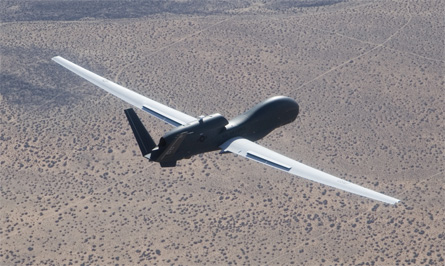The US Department of Defense will cut its acquisition of the Block 30 variant of Northrop Grumman's RQ-4 Global Hawk, but continue with orders for other versions of the high-altitude, long-endurance unmanned air vehicle. Fourteen Block 30 aircraft have been delivered, with the government committed to buying another seven aircraft. The US Air Force's total inventory of the model will effectively be capped at 21 aircraft, representing a cut of 10 from its most recent planned total for the type.
Under the decision, announced on 26 January, the USAF will continue to fly its manned Lockheed Martin U-2s for the foreseeable future.
"The Block 30 priced itself out of the niche for taking pictures from the air," said Ashton Carter, under secretary of defense of acquisition, technology and logistics. "That's the fate of things that become too expensive in a resource-constrained environment."
The project has twice breached the Nunn-McCurdy Act, which requires justification if a programme is more than 25% over budget, and the Block 30 (below) has also received mixed reviews in official evaluations.
Northrop released a statement saying it was "disappointed with the Pentagon's decision, and plans to work with the Pentagon to assess alternatives to program termination."
 |
|---|
© Northrop Grumman |
Another variant of the troubled Global Hawk programme, the Block 40, of which the US Air Force has ordered 11, will continue unabated. The US Navy's MQ-4C broad area maritime surveillance (BAMS) variant, similar in configuration to the Block 30, will also continue. The multi-function active sensor radar for the latter variant has already been flown, and the first BAMS aircraft is scheduled to make its flight debut in the second quarter of 2012.
General Atomics Aeronautical Systems' Predator series, which includes the MQ-1B Predator, MQ-9A Reaper and MQ-1C Gray Eagle, were also spared major changes. The Department of Defense will continue with plans to procure 65 combat air patrols of Reapers, with each system comprised of four aircraft. The air force will be able to surge to 85 such patrols, although details of where the additional aircraft will come from were not immediately available.
Source: Flight International























